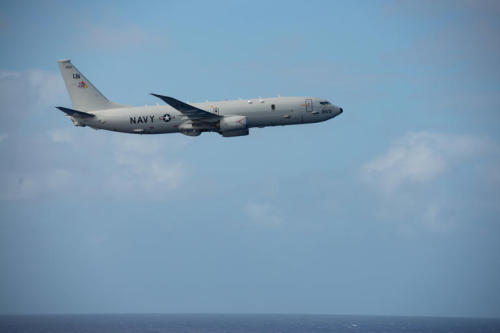
Overview
American military planes designed for anti-submarine warfare, specifically the P-8A Poseidons, flew multiple sorties around Florida on Tuesday in response to a Russian naval flotilla sailing past the East Coast of the United States. This operation underscores the increasing tensions and strategic maneuvers in international waters as global powers project their military capabilities.
Military Maneuvers
A time-lapse of aircraft data from Flightradar24 highlighted more than six U.S. Navy P-8A Poseidons, commonly referred to as “submarine hunters,” operating around Florida. These aircraft were seen performing hours-long flights near the Florida Straits, maintaining a constant presence through a relay system to ensure uninterrupted surveillance. The operations were based out of Naval Air Station Jacksonville.
Russian Naval Activities
The Russian Defense Ministry confirmed the deployment of a nuclear-powered submarine along with three surface vessels to Havana, Cuba, located about 100 miles south of Florida’s Key West. This deployment is intended as a display of Russian naval strength and capability in the Atlantic, unaffected by the ongoing conflict in Ukraine. The flotilla, consisting of a Yasen-M-class submarine, the frigate Admiral Gorshkov equipped with Zircon hypersonic cruise missiles, a replenishment tanker, and a tug boat, is scheduled to arrive in Cuba on Wednesday and depart on June 17.
US and Allied Response
The United States has been actively monitoring the Russian vessels as they transit international waters. A U.S. defense official stated that air and maritime assets under U.S. Northern Command have been conducting operations to ensure the defense of the United States and Canada. This includes routine operations by the Navy’s Second Fleet, Fourth Fleet, the U.S. Coast Guard, and Canada’s Joint Task Force Atlantic, all aimed at maintaining a position of strength.
Strategic Implications
The U.S. State Department indicated that heightened naval and air activity near the United States is expected this summer, leading up to a global Russian naval exercise in the fall. The increased presence of the Russian navy near U.S. waters reflects ongoing geopolitical tensions and the strategic importance of maintaining robust surveillance and defense capabilities.
Technological Advancements
The P-8A Poseidon is a vital asset in the U.S. Navy’s arsenal, designed for long-range anti-submarine warfare, anti-surface warfare, and intelligence, surveillance, and reconnaissance missions. It is equipped with advanced sensors, including the Long Range Anti-Ship Missile (LRASM), enhancing its capabilities in contested environments. Recent orders and upgrades to the P-8A fleet underscore its critical role in modern naval operations (Naval News).
Conclusion
The recent activities of the U.S. Navy and the strategic maneuvers of the Russian naval flotilla highlight the ongoing importance of maritime surveillance and the projection of power in international waters. The P-8A Poseidons’ continuous patrols around Florida demonstrate the U.S. commitment to monitoring and countering potential threats, ensuring the safety and security of its territorial waters.
Disclaimer: The information presented in this article is based on the available data and current events around the time of publication, to the best of our staff research and knowledge. It is intended for educational and informational purposes only and should not be construed as professional advice, financial advice, sports betting advice, or life advice. It is simply our best guess, something to add to your research. We at Las Vegas Top Picks do our best to get stories accurate, but sometimes mistakes and biases happen, and it is always good to double-check other sources and media outlets to confirm stories and the factual details. The opinions expressed in this article do not necessarily reflect the overall opinion of Las Vegas Top Picks.








